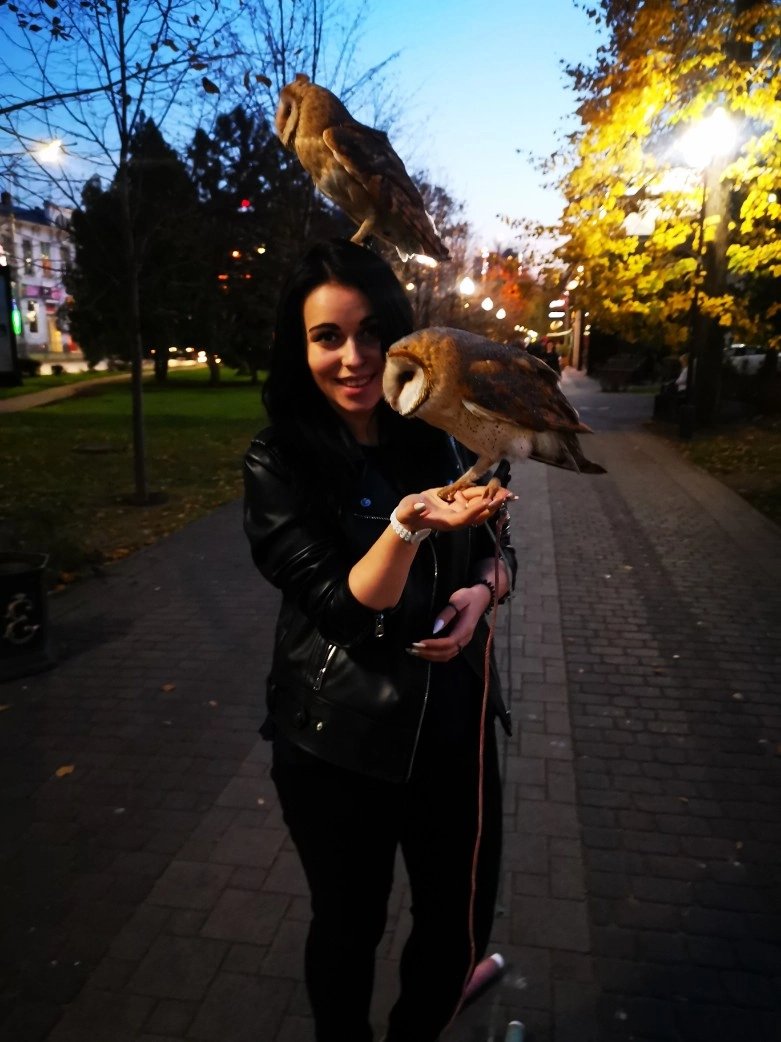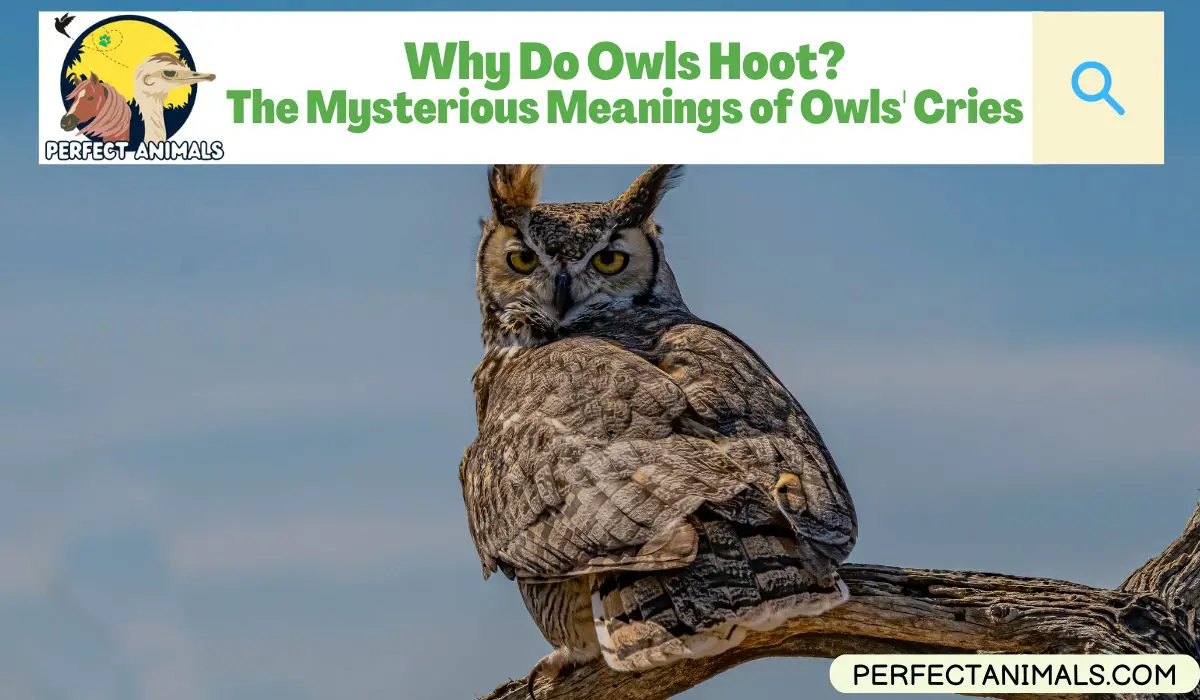The haunting hoots of an owl piercing the night sky is a familiar sound to many.
These mysterious calls often make us wonder – why do owls hoot in the first place? The reasons behind owls’ vocalizations are more complex than you may realize.
Owls hoot for a variety of reasons depending on factors like the time of day, the season, and as a means of communicating with other owls.
The wide repertoire of owl hoots, screams, and other vocalizations all serve different purposes for these captivating avian predators.
From defending their territories to attracting mates, an owl’s hoot carries meaning.
In this article, we’ll explore the different reasons why owls produce their iconic hoots.
We’ll uncover why you may hear owls calling at night or during the day, in the winter or summer, and why they sometimes hoot in sequences of threes.
We’ll also shed light on the symbolic spiritual meanings associated with owl hoots across cultures.
Read on to learn all about the secret messages behind why owls hoot.
Why Do Owls Hoot At Night?
One of the most common times to hear the calls of owls is under the cloak of darkness.
Owls are most vocally active at night because their nocturnal hunting behaviors rely heavily on communication in the dark.
Most species of owls hunt primarily from dusk to dawn. The darkness provides camouflage and the element of surprise over their prey.
Since owls have spectacular night vision, nighttime gives them an advantage over smaller animals that cannot see well in the dark.
The cover of the night also means less competition from diurnal birds of prey like hawks that are sleeping.
When on the hunt, an owl will often hoot to signal its location to a mate or to ward other owls away from its territory.
Some species also scream or make other noises to startle their prey into scurrying.
This helps the owl zero in on something to catch with its exceptional hearing.
A lone owl will hoot to call to a potential mate as well. The night airs carry sound more clearly and farther with less ambient noise.
In sum, the majority of owls hoot at night because their exceptional biology equips them to hunt and communicate best under the moonlight.
Their calls into the darkness serve social functions to connect with mates and defend territories as they search the night for a meal.
Related Article – 9 Owls of Illinois
Why Do Owls Hoot During The Day?
While less common than nocturnal hooting, some species of owls do vocalize during daylight hours as well.
When an owl hoots during the day, it is often communicating something specific to other owls in the area.
One primary reason owls call during daylight is to define territory boundaries.
Male owls will hoot sometimes aggressively to warn other males away from their domain and signal its occupancy. The daylight helps owls spot one another visually to supplement the auditory warnings.
Another possibility is that daylight hooting indicates an owl is feeling stressed or agitated.
This often occurs when owls try to sleep during the day but are pestered awake by noises, other birds mobbing them, or curious humans.
The hoot acts as an alarm that it feels bothered.
Mated pairs of some owl types will also communicate with a series of hoots to maintain their bond while roosting apart during daylight hours.
It serves as a locating signal so mates can regroup at dusk to hunt together.
The visibility of daylight permits owls to seek out their partners better.
While nighttime reigns supreme for a hooting owl, exceptions always exist in nature.
Pay attention to the context of occasional daytime hoots to decipher their specific meanings.
Related Article – 12 Clever Birds That Eat Spiders
Why Do Owls Hoot In The Winter?
As the weather turns colder, you may notice owl hoots become more prevalent in the frosty months of winter. There are a few key reasons these birds become more vocal during winter.
In winter, owls rely more on calls than usual to locate potential mates and signal territorial boundaries because it’s harder to hunt.
The scarcity of food drives them to expend extra energy communicating vocally to protect valuable resources.
The bare trees also make owl calls reverberate farther than in spring and summer months when forest density is higher.
The increased audibility allows winter hoots to transmit more clearly over longer distances.
Additionally, male owls intensify their vocal displays starting in early winter to attract females for breeding season. Their escalating competition to entice partners is directly linked to seasonal hormones.
Finally, juvenile owls try to settle into their territory joining the chorus more often during winter months as food becomes scarce near their parents. This influx increases the frequency of hoots.
While wildlife remains active year-round, scarcity fuels an uptick in owl vocals once winter takes hold across the landscape.
Their nocturnal dialogue persists as a means of survival until spring returns.
You May Also Like – Top 10 Birds With Long Beaks
Why Do Owls Hoot 3 Times?
Owls are creatures of mystery, and their habit of hooting in a series of three calls only adds to their mystique.
This unique hooting pattern has a couple of key explanations behind the significance of three hoots.
One reason owls hoot three times ties back to defending territories.
Male owls will often repeat the same one-two-, or three-note call to assert dominion over an area.
Three hoots in succession are thought to be enough to get the message across clearly. The repetitive pattern allows other owls to better triangulate the source as well.
A three-hoot sequence also seems to communicate awareness of potential danger or unfamiliar entities.
Owls adopt this pattern when alerting others of unknown intruders in their domain. Three warning hoots provide enough notice without overly panicking.
Finally, superstitions ascribe spiritual meanings to the 3-hoot phenomenon.
Tales link the number three to important messages like foretelling death or signaling the mystical.
While mythical explanations are difficult to prove scientifically, the consistency of three hoots does suggest they serve a unique purpose.
So next time an owl calls from a tree line emitting its telltale trio of hoots, you’ll understand the significance behind the cryptic auditory cue.
You May Also Like – 10 Amazing Birds With Long Legs
Why Do Owls Hoot? Spiritual Meaning
Owls hold a mystical place in the beliefs of many cultures around the world.
Their large staring eyes, silent flight, and nightly activity have often symbolized wisdom, foresight, magic, and all things supernatural.
So when an owl breaks the still night with its signature hooting, many connect spiritual meaning to the display.
Across North America, Native American tribes tell tales of owls as guardians of sacred knowledge.
Spotting an owl or hearing its cry at night signifies gaining access to supernatural information not meant for ordinary ears.
Therefore, an owl’s hoot takes on prophetic properties.
In Latin America, the Aztecs and Mayans viewed owls as the companions of wise women and associated their cries with the ability to communicate with lost souls.
Shamans used owls to guide spiritual journeys and uncover occult knowledge.
People from Celtic backgrounds link the owl’s hoot to impending death or disaster.
Beliefs state hearing an owl’s cry means bad luck, sickness, or even warning that doom is imminent for someone soon.
They viewed night owls as carrying messages from the underworld.
No matter your personal beliefs, the aura surrounding owls grants their hoots divine weight.
Next time you hear their calls piercing the night, reflect on what secrets they might whisper from realms unknown.
Final Thoughts
The myriad hoots of owls will likely always hold an air of mystery and fascination.
As we’ve explored, the reasons behind an owl’s hooting depend greatly on contexts like the time of day, the season, and the unique purpose the call serves.
Whether defending a territory, bonding with a mate, alarming others of danger, or portending ominous spiritual messages, owl vocalizations carry layered meanings.
Their hoots communicate what these mysterious birds need to survive the darkness of night and the scarcity of winter.
The next time you hear the piercing call of an owl, take a moment to immerse yourself in the sound and reflect on what hidden messages their hoots might convey.
These majestic avian creatures have captured our imagination for millennia thanks to the aura of enigma perpetuated through their hypnotic hoots in darkness.
Pay mind and you too may uncover some of the secrets held within an owl’s cry.
Resources – (for further reading)
Britannica – Owl | Types, Species, & Facts
National Geographic – Owls, facts and information
Owl Research Institute – About Owls I Owl Research Institute

Larissa Adler, an Ornithology graduate from Charles Sturt University, is an avid birdwatcher with a passion for avian behavior and ecology. With extensive fieldwork experience studying bird migration patterns and nesting behaviors, Larissa brings a practical and insightful perspective to our bird-related articles.

